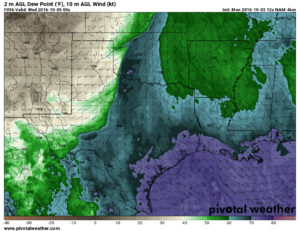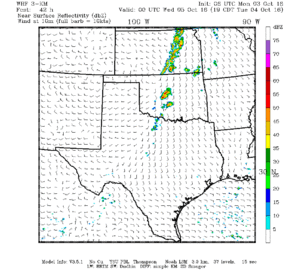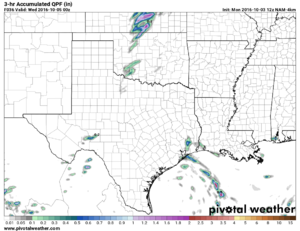adlyons
EF2
SPC SWOD48 has highlight a 15% risk area for day 6 across portions of the southern plains for a potential severe weather day. This has been something myself and a few friends have been watching on the long range guidance for a few days now. It has remained remarkably consistent over the last few runs with some minimal changes in timing and structure of the ejecting wave.
General Synopsis:
Current upper level flow is dominated by enhanced ridge across the central us associated with a west coast rex block as well as a remnant cutoff low over the ohio valley and eastern us. Medium range guidance indicates little change over the next 3 days with high latitude zonal flow developing around the periphery of the central US ridge. Cut off low is expected to meander around the east coast eventually weakening. Beginning day 3 western US ridging begins to break down in advance of developing west coast trough moving on shore by Day 4 Sunday. Trough continues to dig and move into the great basin 4 corners region by Day 5 Monday with the development of a strong lee cyclone along the front range. There is some uncertainty regarding the placement and strength of this low. 500 mb trough should continue to deepen before ejecting out across the central US and southern plains by day 6 Tuesday. Strong flow aloft and the development of a strong lee low suggest potential for strong low level jet development. In terms of moisture the gulf has generally been unaffected by several weak cold fronts along the gulf coast and has retained seasonably strong moisture with PWATS over 2 inches pooled along the mexican coast. However TS Matthew is inducing offshore flow along the eastern half of the gulf shore which could potentially impact moisture return. Regardless, Models show the development of a nice sharp dryline through much of the southern plains with adequate moisture (dewpoints in the upper 50's and low 60's)
Things to like:
Things not to like:
Summary:
Looks like the fall season could get rolling here soon with an active pattern. This setup may be worth watching. Looks like some of the major ingredients are in play. Fall events can be quite large like last years November 16th Outbreak. Always good to pay attention and see what happens.
General Synopsis:
Current upper level flow is dominated by enhanced ridge across the central us associated with a west coast rex block as well as a remnant cutoff low over the ohio valley and eastern us. Medium range guidance indicates little change over the next 3 days with high latitude zonal flow developing around the periphery of the central US ridge. Cut off low is expected to meander around the east coast eventually weakening. Beginning day 3 western US ridging begins to break down in advance of developing west coast trough moving on shore by Day 4 Sunday. Trough continues to dig and move into the great basin 4 corners region by Day 5 Monday with the development of a strong lee cyclone along the front range. There is some uncertainty regarding the placement and strength of this low. 500 mb trough should continue to deepen before ejecting out across the central US and southern plains by day 6 Tuesday. Strong flow aloft and the development of a strong lee low suggest potential for strong low level jet development. In terms of moisture the gulf has generally been unaffected by several weak cold fronts along the gulf coast and has retained seasonably strong moisture with PWATS over 2 inches pooled along the mexican coast. However TS Matthew is inducing offshore flow along the eastern half of the gulf shore which could potentially impact moisture return. Regardless, Models show the development of a nice sharp dryline through much of the southern plains with adequate moisture (dewpoints in the upper 50's and low 60's)
Things to like:
- Large 500 mb trough with strong jet streak and several smaller embedded shortwaves in the flow.
- Quite a strong low level jet with 850mb flow southerly in the 40-50kt range. GFS for comparison.
- Ensemble GFS is hinting at the development of a strong LEE cyclone along the front range that helps to back low level flow.
- Kinematics look excellent with strong shear favorable for supercells and tornadoes.
Things not to like:
- Timing differences between GFS and ECMWF have been noticeable at times. GFS has been showing the main wave ejection earlier and more neutrally which drags the whole system to the east and north wile messing with the shear profiles. AKA Veer Back Veer.
- Moisture return has been iffy on several runs. Offshore flow from TS Matthew could impact the quality of moisture return. The GFS has been mostly consistent in keeping low 60's (62-63) into southern kansas.
- Mid and low level lapse rates have also been less than ideal. Cloud cover ahead of the dryline in some of the models appears to be limiting the surface temperature impacting instability. Would like to see the development of a wider instability corridor and some higher surface temps.
Summary:
Looks like the fall season could get rolling here soon with an active pattern. This setup may be worth watching. Looks like some of the major ingredients are in play. Fall events can be quite large like last years November 16th Outbreak. Always good to pay attention and see what happens.



